It looks like you're using an Ad Blocker.
Please white-list or disable AboveTopSecret.com in your ad-blocking tool.
Thank you.
Some features of ATS will be disabled while you continue to use an ad-blocker.
share:
Hi there, I have an avid interest in Christopher Dunn's work in the research of Egypt's stone work. There are some very interesting oddities that he
has found over the years. Now I leave it up to the reader to believe in his work or not, your choice.
What I want to do here is present some intriguing evidence about the stone vases of Egypt. For me, one of the greatest mysteries of all time is the stones vases of Egypt. Thousands of stones vases have been found in and around the pyramid of pharaoh Djoser in Saqqara, about 30 km south of Cairo. These stone vases originate from before 2800 BC. They are made of hard rock materials such as diorite, gneiss and granite and require heavy-duty machinery such as diamond drills, diamond saws, cylinder bores, grinders etc., all of which did not exist in those days. The wheel had not yet been invented and iron was still unknown. Yet many of these vases are perfectly shaped and are often fully symmetric. In 1880 Professor Petrie, who has done excavations in Egypt for years, noted that the ancient Egyptians really must have had these tools and pointed out saw and drill marks which undoubtedly prove this. However, only a few of Petrie's investigations were followed up. These mysterious vases are now housed in prominent museums such as the Louvre, the British museum and the Petrie museum.
So first off, about Professor Petrie:

Sir William Matthew Flinders Petrie (1853-1942)
He investigated the Great Pyramid and developed dating techniques, especially, "Sequence Dating," which he first used in Palestine, and is still used by archaeologists. Petrie used potsherds previously discarded as rubbish to help with dating. By means of potsherds Petrie identified two Greek cities in the Nile Delta, Naukcratis and Daphne. He made other important Egyptian discoveries, including royal tombs of the first dynasty at Abydos, the palace of Akhenaten at Tell el-Amarna, Roman period mummies, and a Middle Kingdom town.
Books by Petrie:The Pyramids and Temples of Gizeh www.ronaldbirdsall.com...
Links for his other books(full versions)
archive.org...
www.kobobooks.com...
Now on to the stone vases he found. In 1880 Sir William Flinders Petrie realized that only lathe-turning could have produced the symmetry and balance he found on thousands of bowls and vases at Gizeh and Saqqara.Source:www.ehow.com...
While metal chisels could be used to shape soft limestone, the metals available to the ancient Egyptians, copper, bronze and during the first millennium BCE wrought iron, were far too soft to work igneous rock. Hard stone vessels were given their form by pounding them with hammerstones (See Drawing 1 in the diagram below) made of stone harder than the work piece itself. Source:www.reshafim.org.il...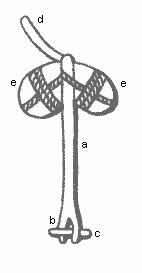

What I want to do here is present some intriguing evidence about the stone vases of Egypt. For me, one of the greatest mysteries of all time is the stones vases of Egypt. Thousands of stones vases have been found in and around the pyramid of pharaoh Djoser in Saqqara, about 30 km south of Cairo. These stone vases originate from before 2800 BC. They are made of hard rock materials such as diorite, gneiss and granite and require heavy-duty machinery such as diamond drills, diamond saws, cylinder bores, grinders etc., all of which did not exist in those days. The wheel had not yet been invented and iron was still unknown. Yet many of these vases are perfectly shaped and are often fully symmetric. In 1880 Professor Petrie, who has done excavations in Egypt for years, noted that the ancient Egyptians really must have had these tools and pointed out saw and drill marks which undoubtedly prove this. However, only a few of Petrie's investigations were followed up. These mysterious vases are now housed in prominent museums such as the Louvre, the British museum and the Petrie museum.
So first off, about Professor Petrie:

Sir William Matthew Flinders Petrie (1853-1942)
Source:www.britishmuseum.org...
Petrie was born in Charlton, Kent on 3 June 1853. He was the son of an engineer, and grandson of Matthew Flinders, the explorer of Australia. Petrie had no formal education, but became interested in Egypt after reading a book about the Great Pyramid when he was thirteen. He first went to Egypt to survey the pyramids in 1880.
Petrie excavated in Egypt for the Egypt Exploration Fund (EEF) from 1884 to 1886, but felt he needed more independence. In 1894, he founded his own archaeological body, the Egyptian Research Account, which later became the British School of Archaeology in Egypt. Later, Petrie rejoined the EEF and excavated for them between 1896 and 1905. In 1892 he was appointed as Edwards professor at University College London, the first person to hold a chair in Egyptology in Britain. He later abandoned Egypt to work on Hyksos sites in Palestine and Gaza. Flinders Petrie died in Jerusalem in 1942.
Petrie's methods were revolutionary for his time. He placed great emphasis on the observation of everything found, and the typological study of all objects. He probably made more major discoveries than any other archaeologist, and his vast collection of antiquities is now at the Petrie Museum, London. Petrie published over a thousand books, articles and reviews.
He investigated the Great Pyramid and developed dating techniques, especially, "Sequence Dating," which he first used in Palestine, and is still used by archaeologists. Petrie used potsherds previously discarded as rubbish to help with dating. By means of potsherds Petrie identified two Greek cities in the Nile Delta, Naukcratis and Daphne. He made other important Egyptian discoveries, including royal tombs of the first dynasty at Abydos, the palace of Akhenaten at Tell el-Amarna, Roman period mummies, and a Middle Kingdom town.
Full in depth article on William Flinders Petrie:www.touregypt.net...
Petrie was not the first excavator in Egypt. But he was severely critical of the shoddy work done by his predecessors. He wrote, "Nothing seems to be done with any uniform or regular plan, work is begun and left unfinished; no regard is paid to future requirements of exploration, and no civilized or labor saving devices are used. It is sickening to see the rate at which everything is being destroyed and the little regard paid to preservation."
Books by Petrie:The Pyramids and Temples of Gizeh www.ronaldbirdsall.com...
Links for his other books(full versions)
archive.org...
www.kobobooks.com...
Now on to the stone vases he found. In 1880 Sir William Flinders Petrie realized that only lathe-turning could have produced the symmetry and balance he found on thousands of bowls and vases at Gizeh and Saqqara.Source:www.ehow.com...
For example, a bowl-maker attained curves of "exact circularity" by rotating the bowl around a fixed blade, and formed a lip by shifting the centring of the bowl. Another round-bottomed vase had walls of such uniform thickness that it balanced perfectly on a curved base like the tip of an egg. In 1995 Christopher Dunn, a machining technologist, concluded from the tool marks on sarcophagus lids that only machine-lathing could have achieved such precision and gloss, especially on hard stones such as granite and slate.
How Lathes Work
Lathes have been used throughout history for shaping wood, metal or stone.
A stone lathe holds and rotates a block against a cutting tool that chisels it into shape. It usually lies horizontally, but larger Egyptian workpieces probably stood upright. Egyptians used hard stone, such as granite, as well as softer alabaster, onyx and limestone, and needed flint or jewel blades that could cut anything. Sand slurry helped abrade a smooth surface. A picture on the tomb of Petosiris, dated to the fourth century BC, shows two Egyptian craftsmen working a vertical lathe, one turning while the other chiseled. However, no earlier depictions of lathes have been found, and earlier designs may be different.
While metal chisels could be used to shape soft limestone, the metals available to the ancient Egyptians, copper, bronze and during the first millennium BCE wrought iron, were far too soft to work igneous rock. Hard stone vessels were given their form by pounding them with hammerstones (See Drawing 1 in the diagram below) made of stone harder than the work piece itself. Source:www.reshafim.org.il...

Sometimes copper saws were used, where the sawing action was due to quartz sand particles embedded in the metal.
Sand was also used as an abrasive for boring and drilling. No coring drills have been found, but apparently hollow copper drills in conjunction with quartz sand were used extensively(2), though whether they used bow-drills [2] or drills with cranks similar to the stonedrill on the right is uncertain. At times tubular drills of various diameters were applied concentrically(3), so that the remaining cores could be broken off cleanly(4), creating a big hollowed-out space. Another option was to drill five or six holes around a central core which could then be removed.
Stonedrills, similar to the hieroglyph on the right, consisted of a wooden shaft(a) with a fork(b) at the bottom which held the stone drill(c), a crank(d), and two stones(e) serving as weights. This kind of drill allowed the drilling of holes which were wider at the bottom than at the neck, as, after creating a hole with a coring drill, a drill bit somewhat wide.

I am fascinated with these anomalies in history and would love to hear ATS's thoughts about all of this.
This one below is an exquisite work of art that would raise the eyebrows of any machinist. To produce such a piece in clay would be very impressive. In granite it is incredible.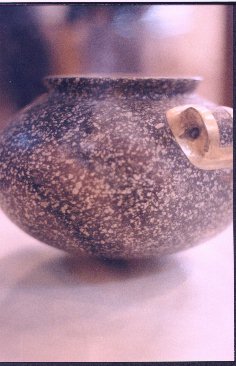
 This one piece is so flawlessly turned that the entire bowl (about 9" in
diameter, fully hollowed out including an undercut of the 3in opening in the top) balances perfectly (the top rests horizontally when the bowl is
placed on a glass shelf) on a round tipped bottom no bigger than the size and shape of the tip of a hen's egg.
This one piece is so flawlessly turned that the entire bowl (about 9" in
diameter, fully hollowed out including an undercut of the 3in opening in the top) balances perfectly (the top rests horizontally when the bowl is
placed on a glass shelf) on a round tipped bottom no bigger than the size and shape of the tip of a hen's egg. This requires
that the entire bowl have a symmetrical wall thickness without any substantial error! (With a base area so tiny - less than .15 " sq - any asymmetry
in a material as dense as granite would produce a lean in the balance of the finished piece.)
This requires
that the entire bowl have a symmetrical wall thickness without any substantial error! (With a base area so tiny - less than .15 " sq - any asymmetry
in a material as dense as granite would produce a lean in the balance of the finished piece.)
Although the idea was first raised by Petrie, it has resurfaced recently through the work of Christopher Dunn, who provides good evidence of 'Machined' artifacts at Giza. He reminds us that Petrie also recognised that the few remaining tools from the period were 'insufficient to explain Egyptian artifacts'.
Egyptologists maintain that the work (including granite), was completed with copper and stone tools, although this has been contested on the basis that the spiral tool-marks in certain core samples indicate that a metal (or precious stone) stronger than copper would have been required.
Why does mainstream archeology tell us the Egyptians did not use these type of tools, when clearly they did.
Maybe these were not made by the Ancient Egyptians? In the production of vases, which are generally rotationally symmetrical, the use of the lathe suggests itself and circular striae on unfinished work pieces seem to point in this direction, but the employment of the lathe is not documented before the middle of the first millennium BCE.
What are your guys and gals thoughts on all of this? Does this help to show that the Egyptians inherited their culture and techniques from a lost advanced culture? Does this just show that mainstream archeology still does not know but a small percent of the actual truth of Egypt's history? All thoughts/opinions welcomed.
This one below is an exquisite work of art that would raise the eyebrows of any machinist. To produce such a piece in clay would be very impressive. In granite it is incredible.



Although the idea was first raised by Petrie, it has resurfaced recently through the work of Christopher Dunn, who provides good evidence of 'Machined' artifacts at Giza. He reminds us that Petrie also recognised that the few remaining tools from the period were 'insufficient to explain Egyptian artifacts'.
Egyptologists maintain that the work (including granite), was completed with copper and stone tools, although this has been contested on the basis that the spiral tool-marks in certain core samples indicate that a metal (or precious stone) stronger than copper would have been required.
Source:www.ancient-wisdom.co.uk...
Mass-Produced lathe-cut vases - Petrie submitted evidence that showed that the ancient Egyptians used Lathes.
It appears that vase making was a considerable post in ancient Egypt. We can read an inscription concerning 'Imhotep' which tributes him as the 'Chief vase maker' amongst his many titles. There have been literally thousands of stone-carved vases found in and around Saqqara, which are all considered to have originated from the first dynastic periods. Many of the vases have been cut from extremely hard stone, again requiring an equal or harder blade to cut them with.
The evidence suggests that a specialized drill would have been used to carve the interiors, which are remarkable in that they have been carved equally well as the outsides, including the difficult section inside and under the curve of the 'necks' of the vases.
The accuracy of the carving leads us to accept that they were most probably lathe-turned, and cut with 'jewel-tipped' blades. The difficulties involved with the internal angles can have only been overcome with a specialized instrument although there is little explanation for why such hard stones were chosen in the first place.
Dunn, says 'There is also evidence of clearly defined lathe tool marks on sarcophagi lids'. The sheer scale of these lids makes this a bold suggestion, which he confidently supports with the observation that a Sarcophagus lid in the Cairo museum shows evidence of 'tool marks that indicate these conditions exactly where one would expect to find them'.
Why does mainstream archeology tell us the Egyptians did not use these type of tools, when clearly they did.
Maybe these were not made by the Ancient Egyptians? In the production of vases, which are generally rotationally symmetrical, the use of the lathe suggests itself and circular striae on unfinished work pieces seem to point in this direction, but the employment of the lathe is not documented before the middle of the first millennium BCE.
What are your guys and gals thoughts on all of this? Does this help to show that the Egyptians inherited their culture and techniques from a lost advanced culture? Does this just show that mainstream archeology still does not know but a small percent of the actual truth of Egypt's history? All thoughts/opinions welcomed.
edit on 11/29/2012 by mcx1942 because: spelling
So if you refuse to believe that the AE could do this work - where is the infrastructure and development of the advanced machinery you feel is needed
to do this type of designs? You'll need to find that technology to be believed.
How the AE made granite vases
Question: Are all AE vases 'perfect"? If they had high technology they should be - are they?
How the AE made granite vases
Question: Are all AE vases 'perfect"? If they had high technology they should be - are they?
edit on 29/11/12 by Hanslune because: (no reason
given)
Is that gold on the handles? Where is this vase?
Answered my own questions by following Hanslune's link. Thanks.
Answered my own questions by following Hanslune's link. Thanks.
edit on 11/29/2012 by PrplHrt because: (no reason given)
This one piece is so flawlessly turned that the entire bowl (about 9" in diameter, fully hollowed out including an undercut of the 3in opening in the top) balances perfectly (the top rests horizontally when the bowl is placed on a glass shelf) on a round tipped bottom no bigger than the size and shape of the tip of a hen's egg. This requires that the entire bowl have a symmetrical wall thickness without any substantial error! (With a base area so tiny - less than .15 " sq - any asymmetry in a material as dense as granite would produce a lean in the balance of the finished piece.)
Personally, most awe-inspiring thread of the week. Very interestnig. Very impressive. Thank you.
reply to post by mcx1942
The sarcophagus lids have always been very impressive to me. The exact 90 degree corners, the mirror finish - the precision is just awesome. Not to mention the massive size of the lids to begin with.
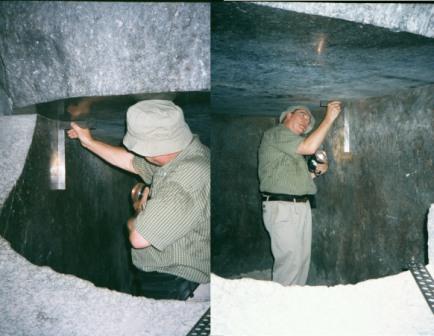
Great thread - S&F
The sarcophagus lids have always been very impressive to me. The exact 90 degree corners, the mirror finish - the precision is just awesome. Not to mention the massive size of the lids to begin with.

Great thread - S&F
Originally posted by Hanslune
So if you refuse to believe that the AE could do this work - where is the infrastructure and development of the advanced machinery you feel is needed to do this type of designs? You'll need to find that technology to be believed.
Thank you for your reply friend.
I am not saying that the AEs did not posses the technology. I am asking why mainstream archaeology says they did not. The workmanship needed would require materials we are told they did not use or have.
Originally posted by mcx1942
Originally posted by Hanslune
So if you refuse to believe that the AE could do this work - where is the infrastructure and development of the advanced machinery you feel is needed to do this type of designs? You'll need to find that technology to be believed.
Thank you for your reply friend.
I am not saying that the AEs did not posses the technology. I am asking why mainstream archaeology says they did not. The workmanship needed would require materials we are told they did not use or have.
Howdy MCX1942
Your basing this on the opinion of one man. His response to anything he cannot understand is to bring in advanced technology - because he himself cannot think like an AE artist, so he makes stuff up.
The problem is there is zero evidence for such technology existing in AE - so you're back to craftsmanship for which there is a lot of evidence
Read the first link - think generations of master craftsmen, with lots and lots of time and intense motivation.....
2nd link more information on how the AE may have done it
2nd link how the AE worked hard materials
I'd suggest also that you look at the artistic work of other civilizations in both stone and metal - did they have craftsmen or advanced technology? Look at the Greek Riace bronzes and early marble statues
edit on 29/11/12 by Hanslune because: (no reason given)
I'm with Hanslune on the time factor. Back then they had nothing BUT time to complete these projects.
IMHO, there were probably a lot more craftsmen back then by necessity.
IMHO, there were probably a lot more craftsmen back then by necessity.
reply to post by PrplHrt
Skill - I can imagine a artist spending months on a vase and years with a team of relatives doing a Sarcophagus.
Additional although the AE were the masters of working with rocks others did to. The Sumerians and their followers worked with Diorite a stone the AE used to shape granite.

Now that may not look like much but the entire surface is inscrbed with Hammurabi's law code and its 2.3 meters tall (7 1/2 feet)

Remember this detail is being placed on the hardnest stone worked by ancient man. Now this came from 1770 BC so they were beginners compared to the AE who had two thousand years of experience on them
Skill - I can imagine a artist spending months on a vase and years with a team of relatives doing a Sarcophagus.
Additional although the AE were the masters of working with rocks others did to. The Sumerians and their followers worked with Diorite a stone the AE used to shape granite.

Now that may not look like much but the entire surface is inscrbed with Hammurabi's law code and its 2.3 meters tall (7 1/2 feet)

Remember this detail is being placed on the hardnest stone worked by ancient man. Now this came from 1770 BC so they were beginners compared to the AE who had two thousand years of experience on them
edit on 29/11/12 by Hanslune because: (no reason given)
Originally posted by mcx1942
The wheel had not yet been invented and iron was still unknown.
The wheel had been around for ages before the these pots were made and iron was too.
Items that were likely made of iron by Egyptians date from 2500 to 3000 BC.
Wiki - Source
Evidence of wheeled vehicles appears from the mid-4th millennium BC, near-simultaneously in Mesopotamia, the Northern Caucasus (Maykop culture) and Central Europe, so that the question of which culture originally invented the wheeled vehicle remains unresolved and under debate. The earliest well-dated depiction of a wheeled vehicle (here a wagon—four wheels, two axles), is on the Bronocice pot, a ca. 3500–3350 BC clay pot excavated in a Funnelbeaker culture settlement in southern Poland
Wiki - Source
Interesting read though and nice pots.
People always doubt that they had better tech than we ASSUME, or that they could have inherited this stuff.
Personaly I prefer to believe my own eyes, and when I see stone work that NO-ONE to date has been able to copy, using soft squidgy copper chissels, then I prefer to believe they were far more advanced than we give them credit for.
Nice OP, thanks
Personaly I prefer to believe my own eyes, and when I see stone work that NO-ONE to date has been able to copy, using soft squidgy copper chissels, then I prefer to believe they were far more advanced than we give them credit for.
Nice OP, thanks
Indeed, these are amazing pieces. I believe most can be found at The Petrie Museum of Egyptian Archaeology, which houses an estimated 80,000
objects.
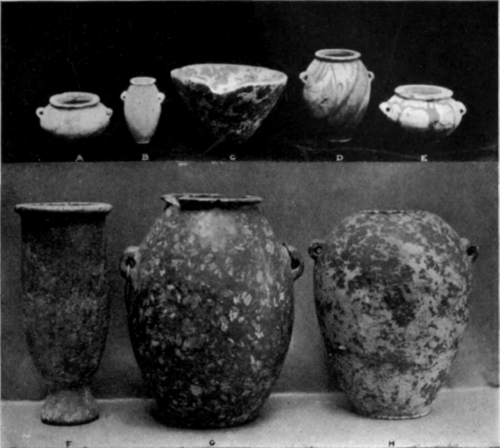
Even on the statues, the detail and symmetry is absolutely mind blowing. Especially if done by hand!
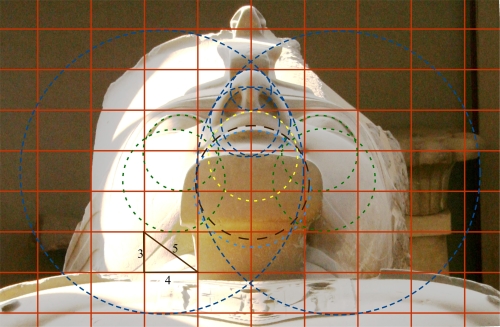


Even on the statues, the detail and symmetry is absolutely mind blowing. Especially if done by hand!


Originally posted by Hanslune
So if you refuse to believe that the AE could do this work - where is the infrastructure and development of the advanced machinery you feel is needed to do this type of designs? You'll need to find that technology to be believed.
How the AE made granite vases
Question: Are all AE vases 'perfect"? If they had high technology they should be - are they?edit on 29/11/12 by Hanslune because: (no reason given)
Thanks for the link hans, that's very informative.
They were masters of stone craft, and the disrespect people show for theirs skills really chaps my hide.
I found site, a couple of months ago, that recreates some of the possible techniques and tools.
Here's the link
www.cheops-pyramide.ch...
One of the things I found very interesting was the possible use of inserted iron chisel tips.
A small iron tip "insert" could have been attached to a copper, bronze or wood shaft.
Since iron would have been so rare and valuable, tool tips would have been "checked out" and returned to a tool master for resharpeing or reforging., everybody remember iron is infinitely recycleable.
Throwing this one out to the peanut gallery.
I have heard this argument over semantics for too long. Here on ATS and other places. For the laymen to believe something, most need to be shown including my self.
Do we have any examples of people today making similar products (large statues for example) with the same materials and tools the AE had to the same degree of artisan ship? I am not talking someone scratching a piece of rock and then extrapolating or theorizing what this may have meant or how it could have worked. That ain't gonna cut it (sorry for the pun).
I saw some dude move a large rock in his back yard and claim that's how it was done. Could have been but moving one rock and building a large complex or structure are two different universes. It's like saying I can plant a flower on my window sill so I must be ready to run a 50,000 acre agribusiness because its just the same thing only a little bigger.
Enough ranting. I am curious if we have an "Old World Egypt' to visit and watch how it's done with plenty of examples.
I have heard this argument over semantics for too long. Here on ATS and other places. For the laymen to believe something, most need to be shown including my self.
Do we have any examples of people today making similar products (large statues for example) with the same materials and tools the AE had to the same degree of artisan ship? I am not talking someone scratching a piece of rock and then extrapolating or theorizing what this may have meant or how it could have worked. That ain't gonna cut it (sorry for the pun).
I saw some dude move a large rock in his back yard and claim that's how it was done. Could have been but moving one rock and building a large complex or structure are two different universes. It's like saying I can plant a flower on my window sill so I must be ready to run a 50,000 acre agribusiness because its just the same thing only a little bigger.
Enough ranting. I am curious if we have an "Old World Egypt' to visit and watch how it's done with plenty of examples.
Thank you all for replying. I enjoy reading all the responses.
I believe the Egyptian's had the skill to do all this, I just think we have the timeline all wrong. I am in no way an expert. I just wanted to present the theories presented by Sir William Matthew Flinders Petrie.
I want to add this little video, I understand how controversial John Anthony West is but I feel his theories have weight behind them.
I believe the Egyptian's had the skill to do all this, I just think we have the timeline all wrong. I am in no way an expert. I just wanted to present the theories presented by Sir William Matthew Flinders Petrie.
I want to add this little video, I understand how controversial John Anthony West is but I feel his theories have weight behind them.
edit on 11/29/2012 by mcx1942 because: addition
edit on 11/29/2012 by mcx1942 because: ditto
reply to post by nerbot
Thank you for your post friend.
Yes, the wheel was invented before the vases were dated to be from. The only thing is, the wheel was not in Egypt at that time. The wheel was not in Egypt until around 2,000 BCE. The stone vases Petrie found originate from before 2800 BCE. In the Early Dynastic Period.
Egyptian Timeline Link:
www.ancientegypt.co.uk...
library.thinkquest.org...
The wiki source you used on Iron is very vague about the Egyptians use of it. I did some research on this and it is pretty much agreed the Iron Age started around 1200 BC. I'm am not a fan of wiki but here is the wiki Iron Age link:en.wikipedia.org...
I am not an archaeologist but I am pretty sure they are at an agreement that copper was the main choice for tools in the Early Dynastic Period that these vases are from.
We have no way to truly date stone, so these vases may even be remnants from an older civilization.
Thank you for your post friend.
Yes, the wheel was invented before the vases were dated to be from. The only thing is, the wheel was not in Egypt at that time. The wheel was not in Egypt until around 2,000 BCE. The stone vases Petrie found originate from before 2800 BCE. In the Early Dynastic Period.
Egyptian Timeline Link:
www.ancientegypt.co.uk...
library.thinkquest.org...
The wiki source you used on Iron is very vague about the Egyptians use of it. I did some research on this and it is pretty much agreed the Iron Age started around 1200 BC. I'm am not a fan of wiki but here is the wiki Iron Age link:en.wikipedia.org...
I am not an archaeologist but I am pretty sure they are at an agreement that copper was the main choice for tools in the Early Dynastic Period that these vases are from.
We have no way to truly date stone, so these vases may even be remnants from an older civilization.
edit on 11/29/2012 by mcx1942 because: fix link
edit on 11/29/2012 by mcx1942 because: spelling
edit on
11/29/2012 by mcx1942 because: ditto
I will be working on updating this thread. Thank you for reading.
I want to explain that advanced technology does not mean ET, it means technology and techniques being used that mainstream archaeology explains was not in use yet at certain times.
Now for some pictures of these beautiful works of art.
They are from the Early Dynastic Period.
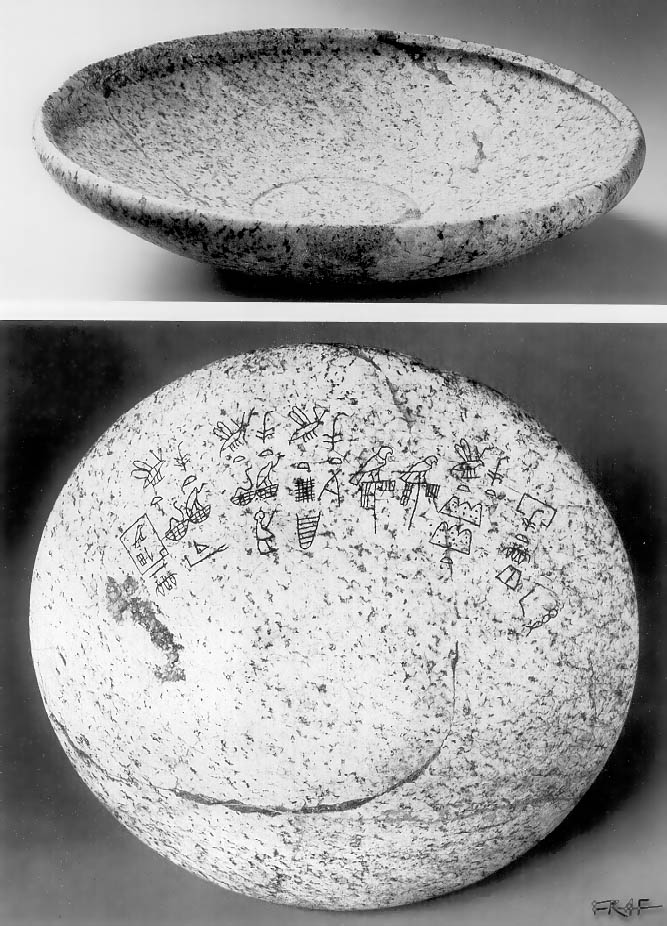
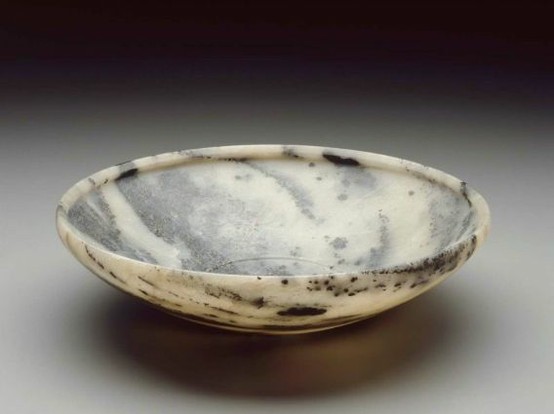
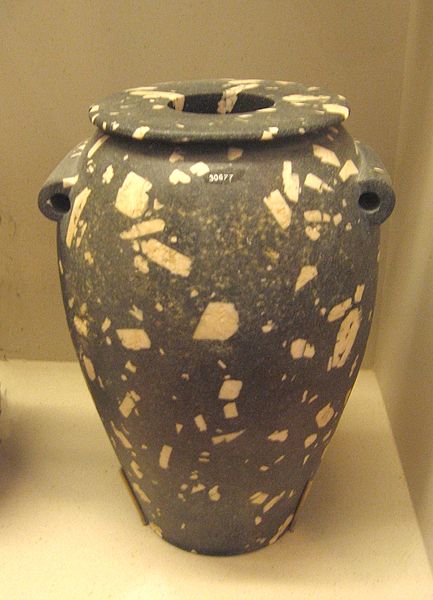

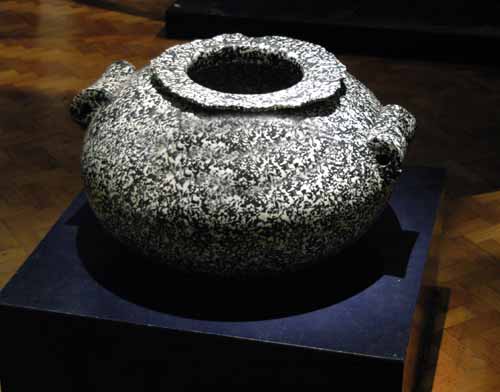
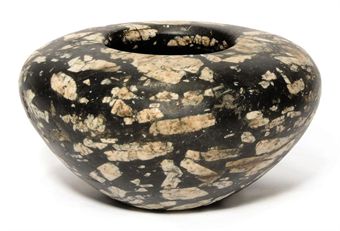
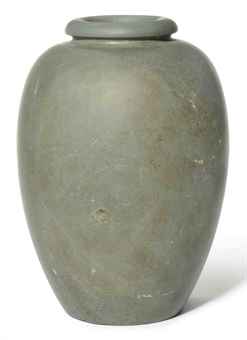
I want to explain that advanced technology does not mean ET, it means technology and techniques being used that mainstream archaeology explains was not in use yet at certain times.
Now for some pictures of these beautiful works of art.
They are from the Early Dynastic Period.







edit on 11/30/2012 by mcx1942 because: placement
Originally posted by Hanslune
reply to post by PrplHrt
Skill - I can imagine a artist spending months on a vase and years with a team of relatives doing a Sarcophagus.
Additional although the AE were the masters of working with rocks others did to. The Sumerians and their followers worked with Diorite a stone the AE used to shape granite.
Now that may not look like much but the entire surface is inscrbed with Hammurabi's law code and its 2.3 meters tall (7 1/2 feet)
Remember this detail is being placed on the hardnest stone worked by ancient man. Now this came from 1770 BC so they were beginners compared to the AE who had two thousand years of experience on them
edit on 29/11/12 by Hanslune because: (no reason given)
i cannot disagree enough, you think that because they lived in the past they had no need for dead lines. hahaha. great thinking, by that train of thought they would never have completed a task because they had all the time in the world apparently :O its not like the Pharoh would want anything done ASAP.
reply to post by repeatoffender
agreed . If my boss asks me for a bowl and I say "ok see you in a few months or a year or so. O and im gonna need to be supported during that time. You know food clothing shelter tools." I would be laughed at. And im pretty sure the pharaoh had a bigger god complex than my boss(though by how much I dont know).
But to say the ancient craftsmen had "all the time in the world" is a bit silly. They would be under constant pressure to get things done. Just like today.
agreed . If my boss asks me for a bowl and I say "ok see you in a few months or a year or so. O and im gonna need to be supported during that time. You know food clothing shelter tools." I would be laughed at. And im pretty sure the pharaoh had a bigger god complex than my boss(though by how much I dont know).
But to say the ancient craftsmen had "all the time in the world" is a bit silly. They would be under constant pressure to get things done. Just like today.
new topics
-
Australian PM says the quiet part out loud - "free speech is a threat to democratic dicourse"...?!
New World Order: 28 minutes ago -
Ireland VS Globalists
Social Issues and Civil Unrest: 59 minutes ago -
Biden "Happy To Debate Trump"
Mainstream News: 1 hours ago -
RAAF airbase in Roswell, New Mexico is on fire
Aliens and UFOs: 1 hours ago -
What is the white pill?
Philosophy and Metaphysics: 3 hours ago -
Mike Pinder The Moody Blues R.I.P.
Music: 3 hours ago -
Putin, Russia and the Great Architects of the Universe
ATS Skunk Works: 6 hours ago -
A Warning to America: 25 Ways the US is Being Destroyed
New World Order: 11 hours ago
top topics
-
President BIDEN's FBI Raided Donald Trump's Florida Home for OBAMA-NORTH KOREA Documents.
Political Conspiracies: 17 hours ago, 35 flags -
A Warning to America: 25 Ways the US is Being Destroyed
New World Order: 11 hours ago, 20 flags -
Mike Pinder The Moody Blues R.I.P.
Music: 3 hours ago, 7 flags -
What is the white pill?
Philosophy and Metaphysics: 3 hours ago, 5 flags -
Biden "Happy To Debate Trump"
Mainstream News: 1 hours ago, 5 flags -
RAAF airbase in Roswell, New Mexico is on fire
Aliens and UFOs: 1 hours ago, 4 flags -
Australian PM says the quiet part out loud - "free speech is a threat to democratic dicourse"...?!
New World Order: 28 minutes ago, 4 flags -
Putin, Russia and the Great Architects of the Universe
ATS Skunk Works: 6 hours ago, 3 flags -
Ireland VS Globalists
Social Issues and Civil Unrest: 59 minutes ago, 2 flags
active topics
-
Starburst galaxy M82 - Webb Vs Hubble
Space Exploration • 10 • : LSU2018 -
Supreme Court Oral Arguments 4.25.2024 - Are PRESIDENTS IMMUNE From Later Being Prosecuted.
Above Politics • 92 • : xuenchen -
Australian PM says the quiet part out loud - "free speech is a threat to democratic dicourse"...?!
New World Order • 1 • : pianopraze -
Putin, Russia and the Great Architects of the Universe
ATS Skunk Works • 24 • : Oldcarpy2 -
Ireland VS Globalists
Social Issues and Civil Unrest • 4 • : TimBurr -
President BIDEN's FBI Raided Donald Trump's Florida Home for OBAMA-NORTH KOREA Documents.
Political Conspiracies • 31 • : theatreboy -
Gaza Terrorists Attack US Humanitarian Pier During Construction
Middle East Issues • 81 • : KrustyKrab -
-@TH3WH17ERABB17- -Q- ---TIME TO SHOW THE WORLD--- -Part- --44--
Dissecting Disinformation • 694 • : Thoughtful3 -
University of Texas Instantly Shuts Down Anti Israel Protests
Education and Media • 282 • : Vermilion -
RAAF airbase in Roswell, New Mexico is on fire
Aliens and UFOs • 5 • : pianopraze
